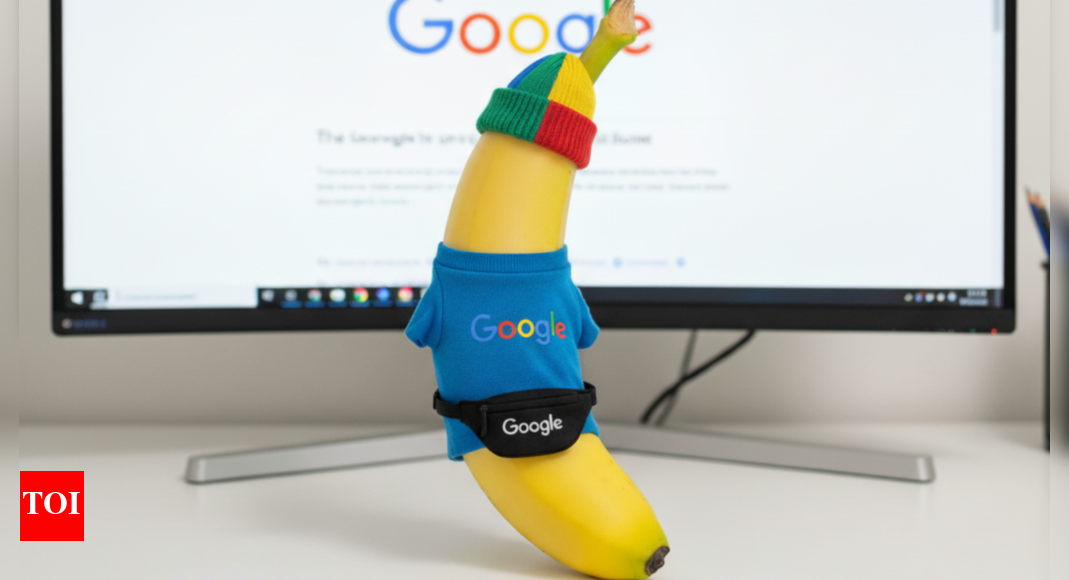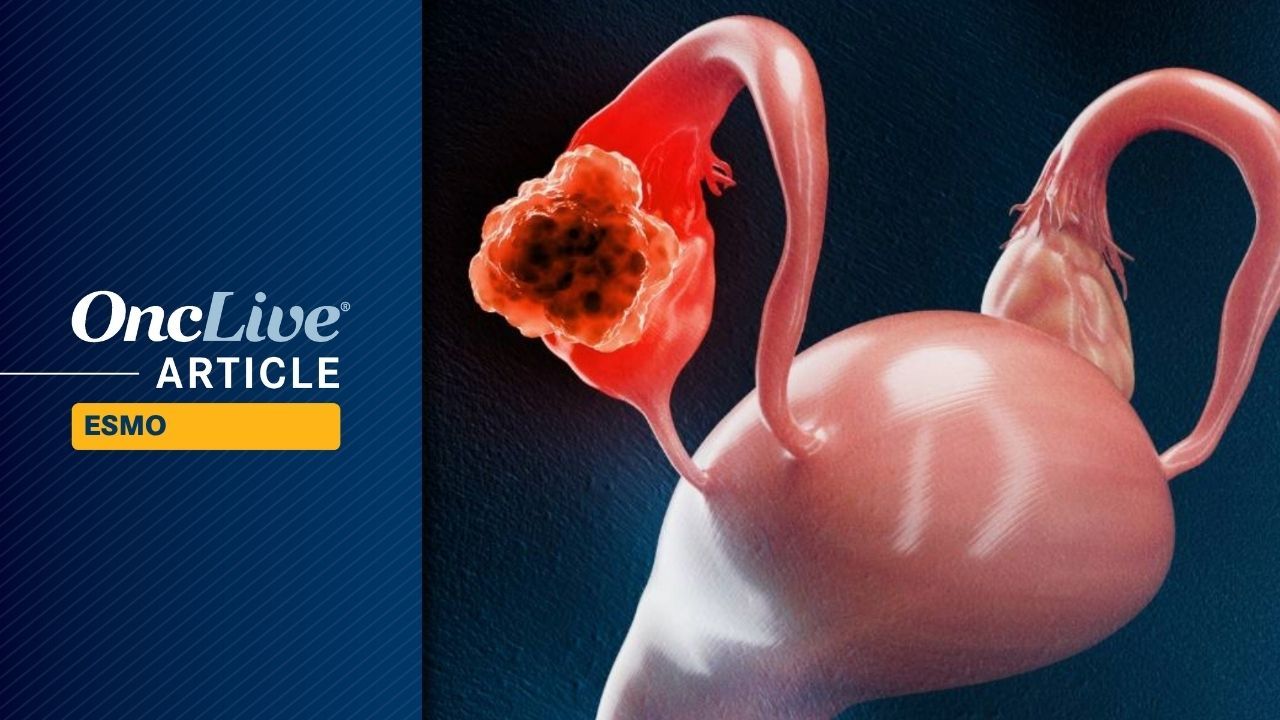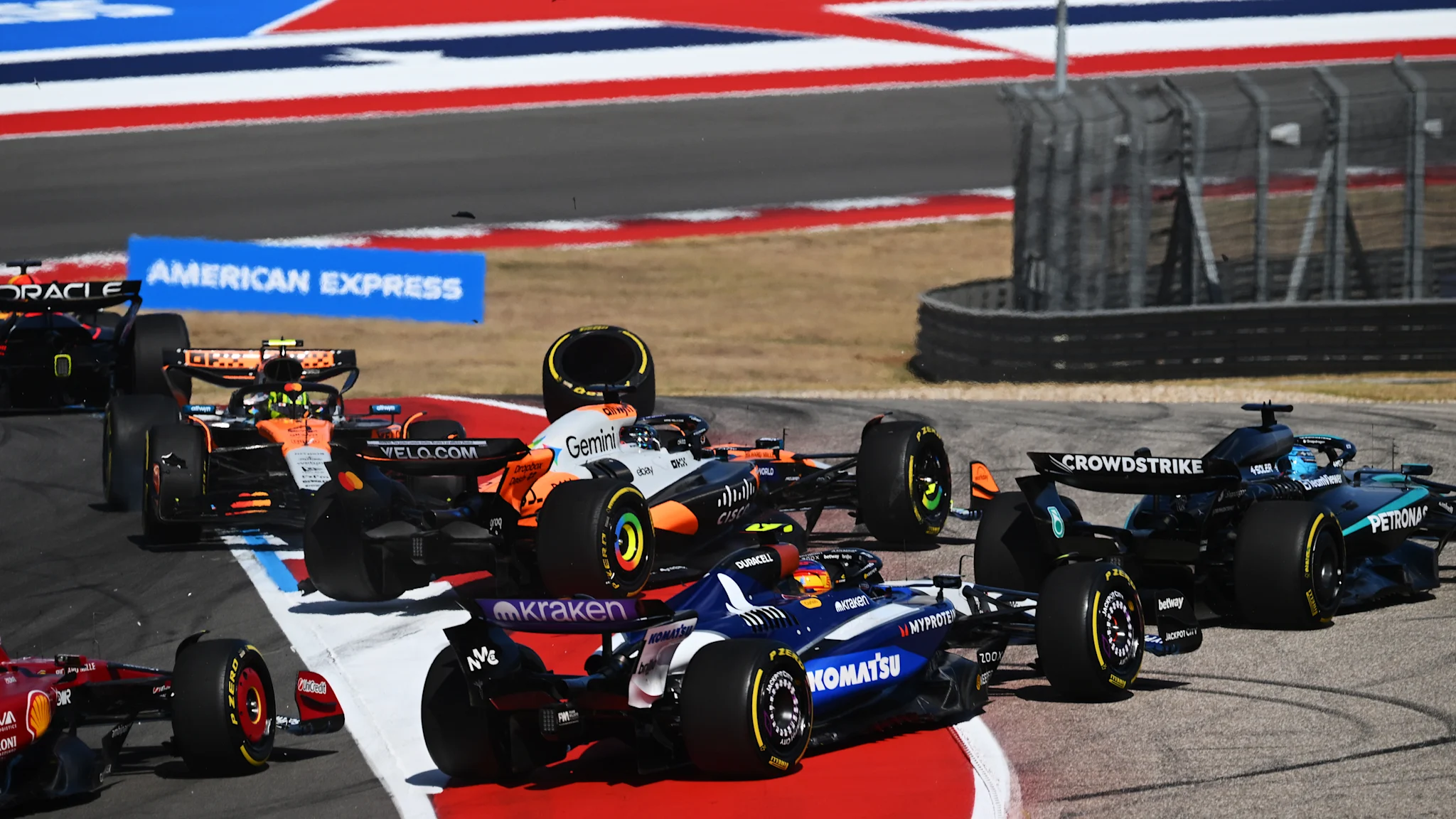What to know about the anti-Trump No Kings protests
Rachel Leingang
Millions are expected to show out for protests on Saturday at more than 2,500 locations across America, from small towns to large cities, to speak against the Trump administration.

Rachel Leingang
Millions are expected to show out for protests on Saturday at more than 2,500 locations across America, from small towns to large cities, to speak against the Trump administration.

Invikafusp alfa led to tumor regression in target lesions in 52% of patients with tumor mutational burden–high (TMB-H) or microsatellite instability–high (MSI-H) solid tumors resistant to immune checkpoint blockade, according to data from the phase 2 START-001 trial (NCT05592626) presented at the
Across the 4 biomarker-enriched populations with TMB-H tumors, TMB-H gastrointestinal cancers, TMB-H metastatic colorectal cancer (mCRC), and MSI-H tumors, the objective response rates (ORRs) were 20.5% (n = 9 of 44), 27.8% (n = 5 of 18), 33.3% (n = 3 of 9), and 30% (n = 3 of 10), respectively. The respective disease control rates were 79.5% (n = 35 of 44), 77.8% (n = 14 of 18), 66.7% (n = 6 of 9), and 70% (n = 7 of 10). Notably, the TMB-H cohort included patients with CRC, gastric, lung, breast, and other cancers.
“Invikafusp alfa, a first-in-class bispecific dual T-cell agonist, demonstrated clinically meaningful monotherapy activity in heavily pretreated immune checkpoint blockade–resistant/insensitive tumors harboring high tumor mutations,” presenting study author Antoine Italiano, MD, PhD, professor of medicine, head of Early Phase Trials Unit at the Institut Bergonié, and head of Precision Medicine at Gustave Roussy in France, stated in the presentation.
Immunotherapy resistance poses a clinical challenge as it limits the number of effective treatment options that are available to patients. Tumor-infiltrating lymphocyte therapies have shown promise in the immuno-oncology (IO)–refractory setting, with Vβ6/10 T-cell subsets representing the most common subset.
Invikafusp alfa was designed to selectively activate and expand Vβ10 T-cell subsets to overcome resistance to immune checkpoint blockade.
Eligibility criteria required that patients have unresectable, locally advanced or metastatic, TMB-H, MSI-H, or virally-associated solid tumors in phase 1, and TMB-H, MSI-H/mismatch repair–deficient (dMMR) tumors, including TMB-H and/or MSI-H CRC in phase 2.2 An ECOG performance status of 0 or 1 was required in both phases. Prior treatment with PD-(L)1 inhibition was allowed. In phase 2, patients with hepatic metastases were not permitted unless they had been treated and were stable.
Phase 1 followed a traditional dose-escalation design in which patients received either 0.01 mg/kg, 0.02 mg/kg, 0.04 mg/kg, 0.08 mg/kg, 0.12 mg/kg, or 0.16 mg/kg of invikafusp alfa.1 The dose expansion phase was broken into 3 cohorts: TMB-H (n = 56; cohort 1), MSI-H/dMMR (n = 29), and TMB-H and/or MSI-H/dMMR mCRC (n = 23 to 56). In phase 2, all patients received the recommended phase 2 dose (RP2D) of 0.08 mg/kg of the agent intravenously every 2 weeks.
The primary objective of phase 1 was to determine the RP2D and evaluate the safety and tolerability of the regimen. ORR per immune RECIST criteria served as the primary objective of phase 2.
As of July 9, 2025, 55 patients with TMB-H/MSI-H tumors had been enrolled in phase 2, adding to the 8 that had been enrolled in phase 1 at the optimal biologic dose. Represented tumor types (n = 63) included CRC (25.4%), non–small cell lung cancer (14.3%), head and neck squamous cell carcinoma (7.9%), gastric cancer (6.3%), breast cancer (4.8%), cutaneous cancer (4.8%), endometrial cancer (4.8%), melanoma (4.8%), anal cancer (3.2%), basal cell carcinoma (3.2%), gastroesophageal junction cancer (3.2%), pancreatic cancer (3.2%), bladder cancer (1.6%), cervical cancer (1.6%), duodenal adenocarcinoma (1.6%), esophageal cancer (1.6%), neuroendocrine carcinoma cells (1.6%), ovarian cancer (1.6%), prostate cancer (1.6%), thymic cancer (1.6%), and thyroid cancer (1.6%).
The median age was 61 (range, 53-69) and most patients were male (95.2%), White (63.5%), and had an ECOG performance status of 1 (52.8%). Most patients received between 1 and 3 prior lines of therapy (65.1%), prior treatment with an immune checkpoint inhibitor (67%), and had TMB-H disease (73.0%). Best response to prior immunotherapy was largely split between partial response (30.1%), stable disease (16.7%), progressive disease (26.2%), and unknown (26.2%).
Italiano noted that the safety profile was consistent with the agent’s mechanism of action. The most common treatment-related adverse effects (TRAEs) were cytokine release syndrome (grade 1, 22.2%; grade 2, 46.0%; grade 3, 12.7%), rash (grade 1, 11.1%; grade 2, 34.9%; grade 3, 7.9%), nausea (grade 1, 28.6%; grade 2, 20.6%; grade 3, 1.6%), pruritus (grade 1, 22.2%; grade 2, 20.6%; grade 3, 6.3%), vomiting (grade 1, 17.5%; grade 2, 31.7%; grade 3, 0%), alanine aminotransferase increase (grade 1, 22.2%; grade 2, 4.8%; grade 3, 9.5%), platelet count decrease (grade 1, 11.1%; grade 2, 12.7%; grade 3, 12.7%), chills (grade 1, 15.9%; grade 2, 11.1%; grade 3, 0%), diarrhea (grade 1, 19.0%; grade 2, 6.3%; grade 3, 1.6%), peripheral edema (grade 1, 9.5%; grade 2, 7.9%; grade 3, 0%), and increased blood bilirubin (grade 1, 7.9%; grade 2, 4.8%; grade 3, 3.2%).
“No step-up dosing and no immune checkpoint inhibitor–type immune-related adverse effects were reported. TRAEs were on target and well managed with supportive care, including corticosteroids such as tocilizumab (Actemra),” Italiano said.
“Selective activation of the T-cell Vβ repertoire represents a novel class of IO bispecific therapy, with broad potential as a next generation T-cell–targeted multi-specific antibody platform for the advancement of precision immunotherapy,” Italiano concluded.
Disclosures: No disclosures were presented for Italiano.

Google’s ‘Nano Banana’ image editing AI tool, celebrated for its ability to maintain likeness in AI-generated images, has been making quite waves. Following its successful integration into Google Search’s AI Mode and Google Lens, Google is…

Yabna N’tchala is a Muay Thai black belt and Brazilian jiu-jitsu brown belt who has participated across all disciplines in combat sports. N’tchala is 12-2-1 with seven finishes, entering his PFL debut this past summer…

Equifax (EFX) has rolled out its new Ignite AI Advisor platform, which brings lender-focused analytics and generative AI capabilities to the forefront. This launch comes at a time of industry shifts, including changes to credit scoring access that could affect future revenue.
See our latest analysis for Equifax.
Despite Equifax’s ongoing push into AI-powered products for lenders, the company’s recent developments arrive amid shifting industry dynamics and competitive pressures. Over the past year, shareholders have faced a total return decline of nearly 19%, while the share price has fallen almost 10% year-to-date. This serves as a reminder that sentiment has faded even as management pursues new growth avenues. Meanwhile, three- and five-year total shareholder returns remain solidly positive, suggesting longer-term investors have still come out ahead.
If you’re interested in uncovering what else is gaining momentum beyond the headlines, this is a great time to expand your search and discover fast growing stocks with high insider ownership
Given recent innovations and ongoing industry disruptions, the key question for investors is whether Equifax’s current valuation still leaves room for upside, or if the market is already pricing in the company’s growth prospects.
Equifax’s most widely followed fair value narrative puts the company’s worth at $277.70 per share, notably above the last close price of $226.91. This suggests that, according to current consensus, the market is not yet pricing in all the drivers that underpin the long-term outlook.
“Accelerating customer adoption of new multi-data product solutions (e.g., TWN indicator, Single Data Fabric, EFX.AI) and continued high NPI (New Product Introduction) rates are expanding Equifax’s value proposition and positioning the company to capture incremental market share and drive sustained organic revenue growth above historical levels. Structural expansion of government verification requirements (e.g., semiannual redeterminations, added work requirements, improper payment focus) and a rising TAM for eligibility verification services are set to benefit long-term revenue growth and reduce business cyclicality as Equifax’s solutions become more critical to federal and state programs.”
Read the complete narrative.
Curious what’s behind that premium price? The secret sauce is in the projected pace of revenue expansion, ambitious margin targets, and a future earnings multiple seldom seen in the industry. Want to see which bullish financial levers drive this fair value? Click through for the complete playbook; your next big insight could be one number away.

The combination of pembrolizumab (Keytruda) plus weekly paclitaxel with or without bevacizumab (Avastin) generated a statistically significant progression-free survival (PFS) benefit vs placebo plus paclitaxel with or without bevacizumab regardless of PD-L1 status, as well as an overall survival (OS) benefit, in patients with recurrent, PD-L1–expressing platinum-resistant ovarian cancer (PROC), according to data from the phase 3 ENGOT-ov65/KEYNOTE-B96 trial (NCT05116189) presented at the
The analysis was broken down between the population of patients with a combined positive score (CPS) of 1 or higher and the intention-to-treat population. Furthermore, data were broken down between interim analysis 1 (IA1), which had a data cutoff date of April 3, 2024, and interim analysis 2 (IA2), which had a data cutoff date of May 5, 2025.
At IA1, the median PFS was 8.3 months (95% CI, 7.0-9.4) in the pembrolizumab arm compared with 7.2 months (95% CI, 6.2-8.1) in the placebo arm, with 12-month PFS rates of 35.2% (95% CI, 28.8%-41.7%) vs 22.6% (95% CI, 17.0%-28.7%), respectively (HR, 0.72; 95% CI, 0.58-0.89; P = .0014).
At IA2, the median PFS was 8.3 months in the pembrolizumab arm compared with 7.2 months in the placebo arm (HR, 0.75; 95% CI, 0.61-0.91); the 12-month PFS rates were 35.9% vs 23.9%, respectively, and the 18-month rates were 18.7% vs 10.5%.
The median OS was 18.2 months (95% CI, 15.3-21.0) in the pembrolizumab arm compared with 14.0 months (95% CI, 12.5-16.1) in the placebo arm, with 12-month OS rates of 69.1% vs 59.3%, and 18-month OS rates of 51.5% vs 38.9%, respectively (HR, 0.76; 95% CI, 0.61-0.94; P = .0053).
The objective response rate (ORR) was 53.0% (95% CI, 45.8%-60.0%), with a complete response (CR) rate of 9.9% and a partial response (PR) rate of 43.1%, in the pembrolizumab arm; in the placebo arm, the ORR was 46.6% (95% CI, 39.6%-53.7%), with a CR rate of 7.8% and a PR rate of 38.7%. The 12- and 18-month duration of response (DOR) rates in the pembrolizumab arm were 46.7% and 28.4% compared with 29.6% and 16.4% in the placebo arm.
At IA1, the median PFS was 8.3 months (95% CI, 7.2-8.6) with pembrolizumab compared with 6.4 months (95% CI, 6.2-8.1) with placebo, with 12-month PFS rates of 33.1% (95% CI, 27.7%-38.5%) and 21.3% (95% CI, 16.6%-26.4%), respectively (HR, 0.70; 95% CI, 0.58-0.84; P <.0001).
At IA2, the median PFS was 8.3 months vs 6.4 months, respectively (HR, 0.73; 95% CI, 0.62-0.86); the 12-month PFS rates were 33.7% vs 22.5%, and the 18-month PFS rates were 17.3% vs 9.0%.
The ORR was 50.4% (95% CI, 44.3%-56.4%), with a CR rate of 8.3% and a PR rate of 42.0%, in the pembrolizumab arm; in the placebo arm, the ORR was 40.8% (95% CI, 35.0%-46.8%), with a CR rate of 6.0% and a PR rate of 34.8%.Furthermore, the 12- and 18-month DOR rates in the pembrolizumab arm were 46.6% and 26.5% compared with 28.4% and 14.5% in the placebo arm.
“These data support the use of pembrolizumab plus weekly paclitaxel, with or without bevacizumab, as a new standard of care for patients with [recurrent] PROC,” presenting author Nicoletta Colombo, MD, PhD, of the Gynecologic Oncology Program at the European Institute of Oncology, IRCCS, in Milan, Italy, and the Department of Medicine and Surgery at the University of Milan-Bicocca in Italy, wrote with coauthors in the presentation.
Any-grade treatment-related adverse events (TRAEs) occurred in 97.8% of the pembrolizumab arm and 95.3% of the placebo arm; grade 3 or higher TRAEs occurred in 67.5% and 55.3%, respectively. TRAEs were serious in 33.1% and 19.5%, led to death in 0.9% and 1.6%, and led to discontinuation of any treatment in 35.9% and 28.0%.
Any-grade immune-mediated AEs occurred in 39.1% and 18.9%, and grade 3 or higher events occurred in 11.6% and 3.5%. They were serious events in 10.9% and 2.2%, and led to treatment discontinuation in 6.9% and 2.5%.
The most common TRAEs in both groups included anemia (49.7% vs 42.1%, respectively), peripheral neuropathy (38.8% vs 31.1%), alopecia (37.8% vs 34.0%), fatigue (35.3% vs 33.0%), and nausea (31.3% vs 27.4%). The most common immune-mediated AEs were hypothyroidism (17.8% vs 6.0%), infusion reactions (5.9% vs 4.7%), and hyperthyroidism (5.0% vs 0.6%).
A total of 643 patients with histologically confirmed epithelial ovarian, fallopian tube, or primary peritoneal carcinoma were enrolled in the trial and randomly assigned to either the pembrolizumab arm (n = 322) or the placebo arm (n = 321). Treatment was either pembrolizumab at 400 mg once every 6 weeks for 18 cycles or placebo on the same schedule; all patients received paclitaxel at 80 mg/m2 on days 1, 8, and 15 of each 3-week-long cycle, and they either did or did not receive bevacizumab at 10 mg/kg every 2 weeks.
Patients were enrolled in the trial if they had received 1 or 2 prior lines of therapy with at least 1 platinum-based chemotherapy; prior anti-PD-1 or anti-PD-L1 agents, PARP inhibitors, and bevacizumab were permitted. Additionally, patients had radiographic progression within 6 months after the last dose of platinum-based chemotherapy and an ECOG performance status of 0 or 1.
The primary end point of the trial was PFS per RECIST v1.1 by investigator assessment, and a key secondary end point was OS.
The median age of patients was 62 years vs 61 years in the pembrolizumab vs placebo arm, 64.3% and 67.6% of patients were White, 41.3% and 41.1% had a PD-L1 CPS from 1 to less than 10, and 31.4% and 31.2% had a PD-L1 CPS of at least 10.
Colombo N, Zsiros E, Sebastianelli A, et al. Pembrolizumab vs placebo plus weekly paclitaxel ± bevacizumab in platinum-resistant recurrent ovarian cancer: Results from the randomized double-blind phase 3 ENGOT-ov65/KEYNOTE-B96 study. Presented at: European Society of Medical Oncology Congress 2025; October 17–20, 2025; Berlin, Germany. Abstract LBA3.

Max Verstappen took his third consecutive Sprint victory at the Circuit of The Americas after title rivals Lando Norris and Oscar Piastri retired in an opening lap collision involving Sauber’s Nico Hulkenberg.
Verstappen converted Sprint pole…

Tim Brown will remember 12 December 2020 for ever.
It was the day the software company SolarWinds was notified it had been hacked by Russia.
Brown, the chief information security officer at SolarWinds, immediately understood the implications: any of the company’s more than 300,000 global clients could be affected too.
The exploit allowed the hackers remote access to the systems of customers that had installed SolarWinds’ network software Orion, including the US treasury department, the US department of commerce’s National Telecommunications and Information Administration, along with thousands of companies and public institutions.
Brown says he was “running on adrenaline” in the first few days after the attack.
It was during the early stages of the Covid pandemic when full-time work-from-home was the norm, but the company’s email was compromised and couldn’t be used to communicate with staff.
“We gave up on the phones and just everybody came into the office and we got Covid testing,” Brown says. “I lost 25 pounds in about 20 days … just going, going, going.”
He appeared on CNN and 60 Minutes, and in every major newspaper.
“The world’s on fire. You’re trying to get information out and trying to have people understand what’s safe and what’s not safe.”
The company switched to Proton email and Signal while its email was compromised, Brown says. He was taking calls from companies and government agencies across the globe, including the US army and the Covid vaccine program Operation Warp Speed.
“You get the world wanting verbal communication not written communication. And that is a kind of an important lesson: you can write things down, but they want to talk to the [chief information security officer],” says Brown, who spoke at Melbourne’s CyberCon on Friday.
“They want to be able to hear colour around the outside of it, so very important to be prepared for that kind of response.”
The notification about the hack came in a phone call from Kevin Mandia, the founder of the cybersecurity firm Mandiant, to SolarWinds’ then CEO Kevin Thompson.
Mandia told Thompson that SolarWinds had “shipped tainted code” to its Orion software, which helps organisations monitor outages on their computer networks and servers.
The exploit in Orion was being used to attack government agencies, Mandia told Thompson.
“We could see in that code [it] was not ours, so when we got that, it was ‘all right, this is real’,” Brown recalls.
The Texas-based SolarWinds determined that 18,000 people had downloaded the tainted product, which the hackers, later attributed to the Russian Foreign Intelligence Service, were able to insert into Orion in the build environment where source code is turned into software.
The news broke on the Sunday. SolarWinds notified the stock market before it opened on Monday.
The original estimate that up to 18,000 clients could be affected was later revised down to about 100 government agencies and companies that actually were.
“It would have been nice to know that on day one, but that was the truth of the matter, right?” Brown says. “We weren’t really the target. We were just a route to the target.”
SolarWinds called in CrowdStrike, KPMG and the law firm DLA Piper to deal with the response and investigation.
SolarWinds stopped work on new features for the next six months and its team of 400 engineers focused on systems and security to get the company back on its feet.
“We really took transparency to heart – how can we make sure people realise [what] threat actor models [are out there], what they do, how they do reconnaissance, how they then do an attack [and] how they then leave.”
Brown says the company’s customer renewal rate fell into the 80% range in the first few months after the incident, but has since returned to more than 98%.
But then came the legal implications.
The Biden administration imposed sanctions and expelled Russian diplomats in 2021, partly in response to the attack.
SolarWinds settled a class action lawsuit over the attack in 2022 for US$26m. The Securities and Exchange Commission (SEC) then filed a lawsuit against SolarWinds and Brown personally in October 2023, accusing the company and Brown of misleading investors over its claims about cybersecurity protections, and failing to disclose known vulnerabilities.
Brown was in Zurich when he found out he was being charged.
“When I walked up a hill, I would lose my breath. My arms would get heavy, my chest would get tight. I was just not getting enough oxygen,” he says. “I did a silly thing. I flew home … I couldn’t walk from the terminal to my car without stopping. That’s a walk I had done thousand of times.”
He was having a heart attack. When he got home, his wife took him to the hospital, where he underwent surgery. He has since recovered.
“Stress keeps building up and I thought I was managing it well and I didn’t proactively go to a doctor,” he says.
Brown says he now advocates for companies going through similar incidents to employ psychiatrists to help staff process the stress.
“The stress level was pumped up, and then it just went over the edge, but stress was building up all the time.”
A confidential jointly proposed settlement with the SEC was announced in July, but has yet to be approved. The US government shutdown has delayed the finalisation of the agreement.
Brown has remained with SolarWinds throughout the process.
“It happened on my watch, that’s how I look at it. There are reasons why it occurred, nation state attack, et cetera, but still it happened on my watch,” he says.
“I guess I’m stubborn. But it was just very important for us to get through this whole cycle, so leaving wasn’t an option until it was done.”

Although it’s now long deleted, my old X account served at least one useful purpose in life. My profile image had me looking up quizzically at a ragdoll kitten on my shoulder. That cat (once mistaken for a parrot by a bone-headed rightwing…

What are you secretly really good at?
When I hold water in my mouth, I’ve got a perfect space in between each of my teeth. So when I point my neck to the sky and blow out water, it looks like a full fountain. It’s all perfect streams, and it…